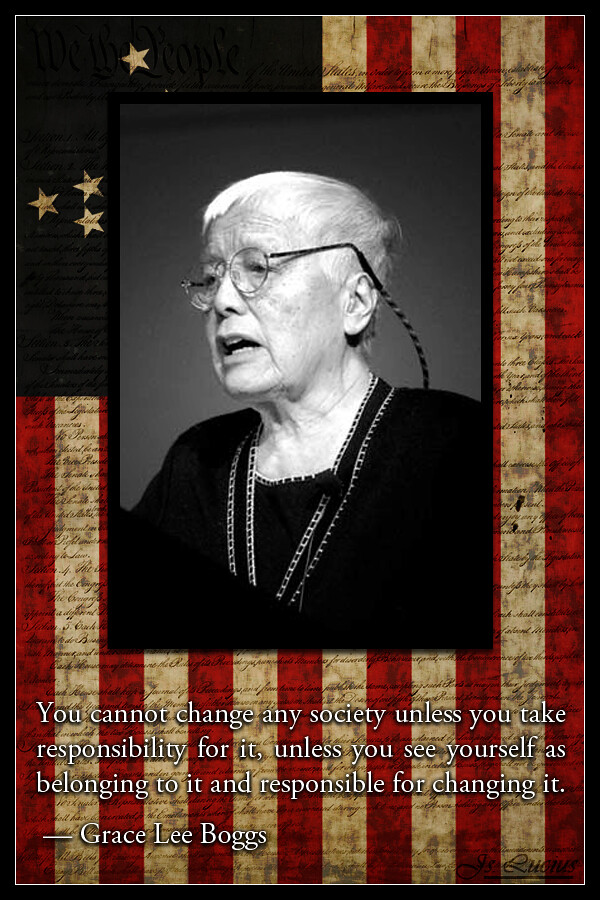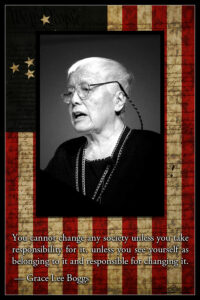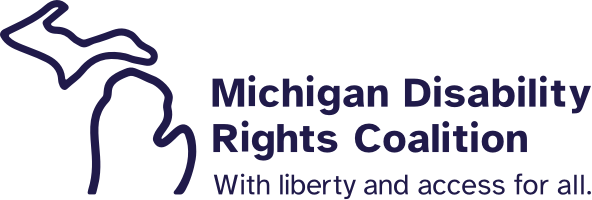Critical Connections
Thursday, June 13, 2019


“We never know how our small activities will affect others through the invisible fabric of our connectedness. In this exquisitely connected world, it’s never a question of ‘critical mass.’ It’s always about critical connections.” Grace Lee Boggs
This quote came up in my Facebook memories this week, posted by a friend and colleague some years ago. It provided a moment of synchronicity for me (a term my friend and teacher Jan Lundy uses often). Synchronicity is when two or more things happen that seem related but don’t have a causal connection that you can identify. For me, this quote from Grace Lee Boggs is related to the work we are looking at doing to address social isolation of people with disabilities in nursing homes. People residing in nursing homes are disconnected from their friends, families, pets, support systems, homes, belongings, interests and hobbies, their communities. Their fabric of connectedness is torn apart. Could assistive technology for computer/internet access be a tool that will help weave connection again?—repairing and building new critical connections for people who end up in nursing facilities.
A member of our board sent along a frightening article/news story on the social isolation, depression, and suicidal thoughts and actions of people in nursing facilities.
Having worked in nursing facilities and having worked as an ombudsman to improve conditions in nursing facilities, I can see where even very good nursing homes are places where people develop or return to deep depression and hopelessness. The online communities of my choosing have been huge sources of support for me when I have had strong depression symptoms—communities of peers, communities of neighbors, communities of nature lovers and book readers, communities of women who have experienced multiple pregnancy loss like myself. Having the internet, Facebook, Facebook Groups, email and other social media keeps me connected in ways that are meaningful and supportive for me.
What if people in nursing facilities could access communities that are important to them? While it would not solve the problem of being in a nursing facility if the person really wants to be in their home, it could provide an avenue for sharing stories, providing mutual support, learning and growth.

There is a digital divide. People with disabilities do not access computers and the internet at the rate that the general population enjoys. My guess is that nursing home residents have an even bigger gap in access.
Are there ways we can work together to bridge that divide?
What AT do you use for computer and internet access?
In what ways has that access connected you to communities you choose?

